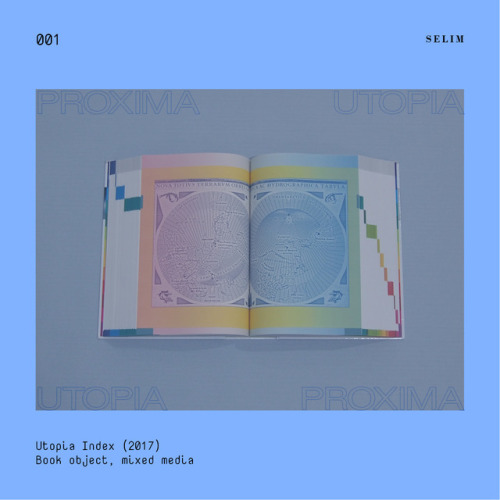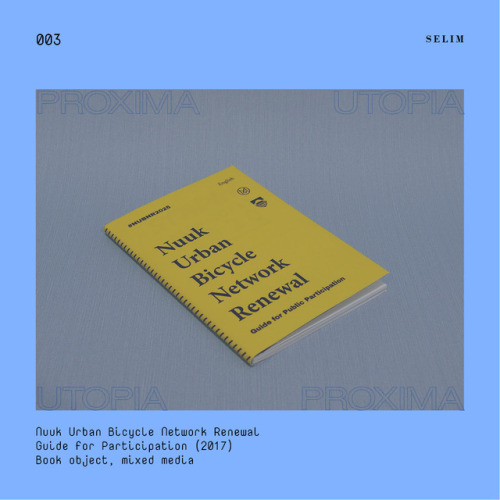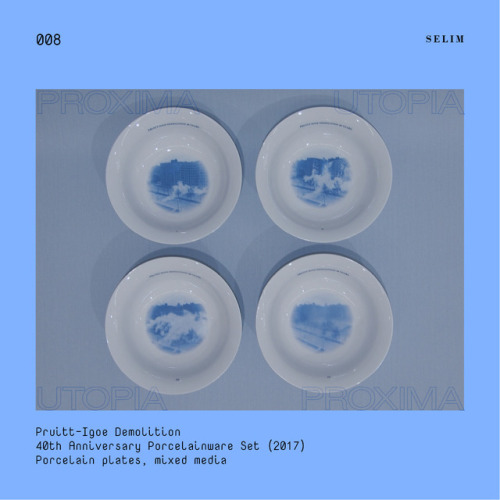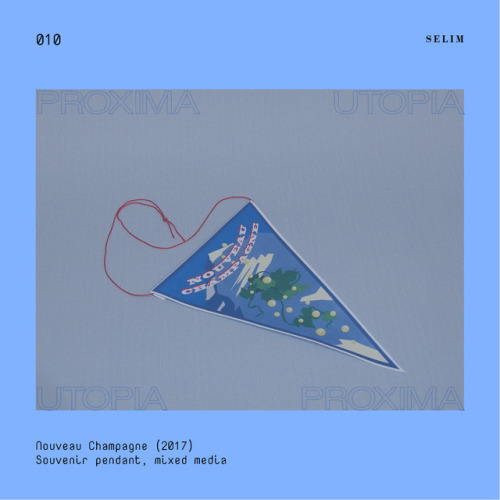#design fiction
Items 1-10 from Proxima Utopia, on display at the Architecture After the Future exhibition 23 Jun - 30 Jul 2017 at Haus der Architektur in Graz.
“At the exhibition in HDA, we present around fifteen fictional or utopian objects. Together they form a kind of classical vitrine display, popularised by museums and natural history collections. Laid out on a neutral grey fabric with exhibition labels, each object is meant to read as evidence of speculative future scenarios. The items range from books and other printed objects to memorabilia and souvenirs of utopian futures. They are presented together, even though their storylines might be contradictory or improbable.”
Post link
Blue-Eyed Me by Alexey Marfin
Fantastic seven-minute nearfuture scifi about technology lifecycles, their impact on socio-technological systems respectively customer interactions and hidden pacesetting infrastructures & industries.

This is the world of the 99-cent lifeform. Like a social media profile or an online shopping list tailored to our hobbies, we collect genetically modified pets, engineered to look like their owners.
Alexey is part of the Unknown Fields Division run by Liam Young and Kate Davies. A “a nomadic design research studio that ventures out on expeditions to the ends of the earth to bear witness to alternative worlds, alien landscapes, industrial ecologies and precarious wilderness.”
[read more at the creators project][Unknown Fields][Alexey Marfin] [film still by Alexey Marfin]
Studio Smack - Branded Dreams: The Future of advertising
We’re not there yet. Guess that’s the best way to describe the status of nascent technologies like neurotech-brain-reading-devices and inception methods, memory implants and memory augmentation at the moment without the use of hype and buzzwords a la: “it will disrupt the way we live”or“this tech will change everything blabla”.
But how to talk about emerging technologies, socio-technological trends and changing societal patterns in a nutritious way? One of the best mix methods approaches for a broader audience is to research possible implications of emerging technologies and visualize them in a discussion-ready format for a broader audience.
In this case: If we know how to hack our brains and mix it with typical advertising and marketing strategies, what are possible outcomes? Studio Smack has created a great visual scifi prototype (and/or design fiction with flaws) for a postnormal world, that should spark discussions with contrasting points about the implications of neurotechnologies:
We see ads everyday and everywhere. They have become part of our life. While some people try to avoid seeing ads, advertisers keep finding new ways to reach us. However they are unable to reach us when we sleep. Our dreams are the last safe and add-free place so it seems.
But what happens when advertisers have the possibility to enter our dreams? Based on recent developments in brain science and technology this might be possible in the near future.
Chapeau! Great work.
Farma: A Home Bioreactor for Pharmaceutical Drugs
Will Patrick - MIT Media Lab graduate, former Google[x] researcher & Autodesk Artist in Resident Project - has created a bioreactor that could enable the production of pharmaceutical drugs at home. Farma is designed for a near future, where it grows, measures, filters and drys synthetically designed microbes.
Farma brews Arthrospira platensis, also known as Spirulina, that has been modified to produce pharmaceutical drugs. The reactor brews, measures, filters, and dries the Spirulina into a powder. The consumer then fills gel capsules using the accompanying pill maker and consumes the drugs. It should be able to grow other organisms, including algae, yeast and E coli.
Farma’s goal is to provoke discussions about the dos and don'ts of new emerging technologies: “I want people to understand what could be possible and help them imagine a possible future.”
[read more at FastCo][William Patrick] [picture by Will Patrick]
Post link











